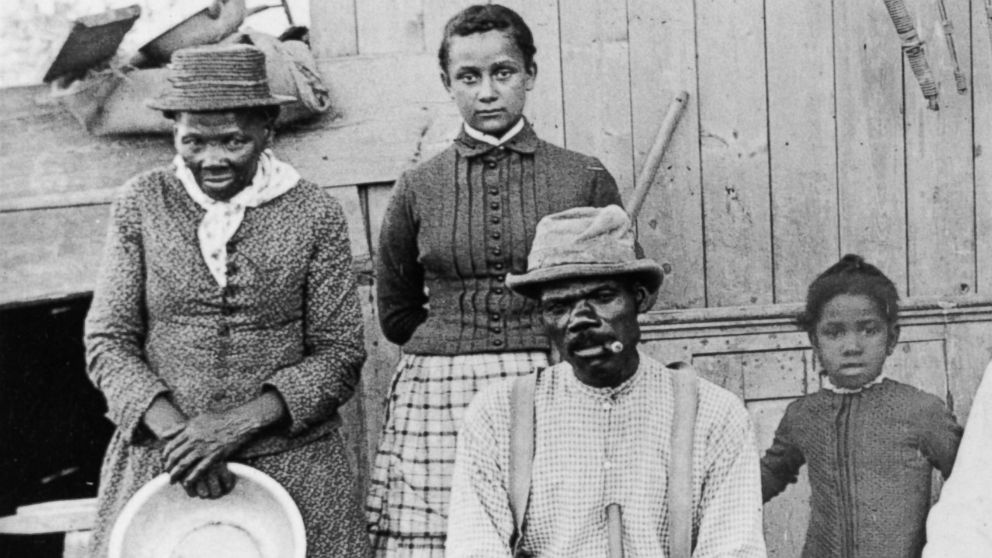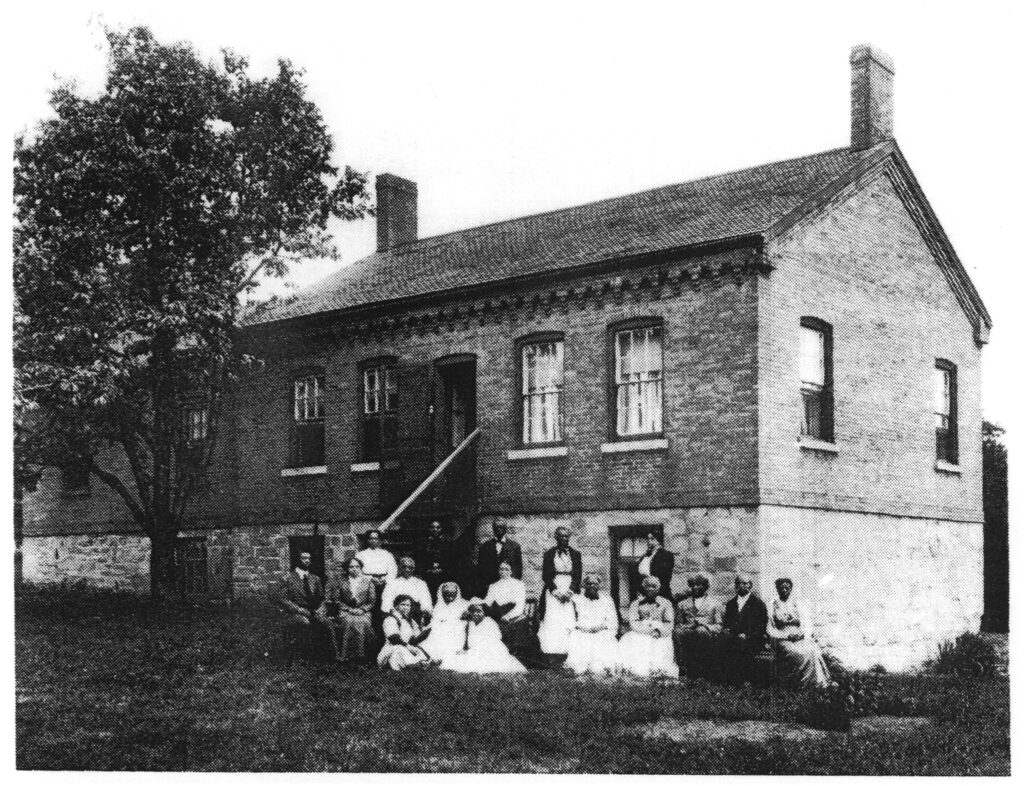Table Of Content
In 1903 as she was unable to make tax payments on the property, she donated it to the AME Zion Church with the condition that the church would continue to operate the home, that way her dream would outlive her. It took 5 years to fully staff and equip the home and on June 23, 1908 the Harriet Tubman Home for the Elderly was inaugurated. Tubman continued to live in her residence until her health deteriorated and could not take care of herself. The community rallied around Harriet and made plans to build a new brick house for her. Constructed between 1881 and 1882, the new brick house we see today was erected on a foundation of cut Onondaga limestone laid upon the subsurface rubble stone footing of the old house.

The Saga of Harriet Tubman, "The Moses of Her People"
This brick building was where Tubman and her family lived during their time in Auburn. Unfortunately, as of the summer of 2019, the home was undergoing renovations and wasn’t open to the public to tour. Hopefully someday soon, the house will be open for tours as it would be really neat to see the inside of where Tubman lived. In 1859, Tubman bought a piece of land in Auburn, New York from Senator (and future Secretary of State) William H. Seward. This land was where she and her family lived for much of the rest of their lives.
Site of Harriet Tubman’s Lost Maryland Home Found After Decades-Long Search
But it could also be a song of liberation, where the lyrics held coded messages that told of when Underground Railroad conductors like Harriet Tubman would arrive to assist in stealing away to freedom. This is a small-scale version of Saar’s 13 feet tall monument to Harriet Tubman that stands in Harriet Tubman Memorial Plaza, in south Harlem at St. Nicholas Avenue and Frederick Douglass Boulevard at West 122nd Street. Harriet Tubman was guided by a deep faith and devotion to family, freedom, and community.
HISTORY Vault: Black History
For two weeks, a dozen archaeologists traipsed through the muddy swamps of Maryland's Eastern Shore, looking for Ben's 10 - a 10-acre plot of land left to Ben Ross, Harriet Tubman's father. He was an enslaved lumberjack and timber foreman who, after the death of his slaveholder, was granted his freedom, the house he lived in and a 10-acre piece of land. Harriet Tubman would buy a second, 25-acre parcel from the lot next to her homesite in 1896 using the profits from her second biography.
What happened to the Harriet Tubman House in Boston? - Axios
What happened to the Harriet Tubman House in Boston?.
Posted: Thu, 23 Feb 2023 08:00:00 GMT [source]
Babies, Beauty, and Bravery: Black Excellence on the Covers of The Crisis
During this period, the dream of freedom had spread across antebellum plantations and Tubman’s visions were no different. First, her father was set free when she was about eighteen, and then she also learned that the last will of her previous owner manumitted Tubman’s family. However, her new owner refused to acknowledge this and Tubman’s mother, Tubman herself and her siblings remained in bondage.
The park in Auburn was established on January 10, 2017 at a signing ceremony at the US Department of the Interior in Washington, DC. US Secretary of the Interior Sally Jewell was joined by New York lawmakers and local and federal officials in creating the 51st National Historical Park and the 414th US national park system unit. Nelson Davis, Tubman’s second husband, was a brick maker and helped rebuild her house. He replaced the original wood structure with brick, making it stronger and longer lasting. Overall, it’s worth taking the time to visit the Harriet Tubman National Historical Park in Auburn, NY. While tours sadly don’t go into her actual home, they offer a wealth of information and really helped me to better understand and appreciate the life and impact of Harriet Tubman.

To memorialize and ensure sustainability of her work, Harriet Tubman wanted to see her home established as an incorporated organization that would continue in her name. When Harriet Tubman purchased her 7-acre parcel from Frances Seward in 1859, the transfer of land to a self-emancipated person was illegal under the Fugitive Slave Act. Frances Seward was breaking the law and taking a large risk to help Harriet Tubman have her own land. Frances (correctly) thought that since her husband, William Seward, was a powerful politician in New York State that no action would be taken against them. A historical marker on Maryland's Eastern Shore contains errors about the story of Harriet Tubman, who grew up nearby.
Share Your Story
Personal objects like her hymnal reveal her domestic life as a wife and mother, and the devout religious beliefs that inspired her to “conduct” hundreds of African Americans to freedom from bondage. After approximately 13 trips south, rescuing 70 enslaved persons, the "Woman called Moses" settled in Auburn. Come and experience the indomitable spirit of this remarkable woman at the Home for the Aged, the Tubman residence, the Infirmary ruins and related sites.
Man sentenced for stealing more than $250K from Cayuga County dairy farm
Born into slavery between about 1820 and 1825, Tubman grew up in antebellum Dorchester County. According to Encyclopedia Britannica, she was forced to work from a young age, alternatively acting as a nursemaid, a field hand, a cook and a woodcutter. Tasked with degrading duties, Tubman often disregarded orders, leading her overseers to switch her from domestic assignments to more arduous labor in the fields. Nearby, Schablitsky unearthed ceramic fragments dated to between the 1820s and 1840s.
Tubman helps people of all ages, genders, and cultural backgrounds who have experienced relationship violence, sexual exploitation, homelessness, mental and chemical health challenges, and other trauma. Visit our website terms of use and permissions pages at for further information. The Harriet Tubman National Historical Park will be holding a community reopening of the church June 22.
She provided crucial intelligence to Union commanders about Confederate Army supply routes and troops and helped liberate enslaved people to form Black Union regiments. The 1850 Fugitive Slave Act allowed fugitive and freed workers in the north to be captured and enslaved. This made Harriet’s role as an Underground Railroad conductor much harder and forced her to lead enslaved people further north to Canada, traveling at night, usually in the spring or fall when the days were shorter. Portraits of Harriet Tubman in the NMAAHC collection document her as a woman, as a wife and mother, and as a caretaker. Observing these images of Tubman at different stages of her life provides further context for her story and legacy. These images give the famed Underground Railroad conductor a more tangible connection to the significant role of Black women’s activism and highlights the way images shape how we remember important Black women.
The traveling Harriet Tubman exhibition on display in the Lowcountry - Bluffton Today
The traveling Harriet Tubman exhibition on display in the Lowcountry.
Posted: Sat, 01 Jul 2023 07:00:00 GMT [source]
Tubman, known as the Moses of Her People, was a courageous fighter who delivered hundreds of slaves to freedom on her Underground Railroad and promoted black education, social betterment, and women's rights. In 1857, she moved to Auburn where she was provided a two-story brick home by William H. Seward, the US Senator from New York. As a conductor on the Underground Railroad (a network of abolitionists that helped slaves escape to freedom), she made a dozen trips south over a period of 11 years. Tubman died in 1913 at her South Street property, and is buried at Fort Hill Cemetery. The present-day site includes a Welcome Center and the Harriet Tubman Home for the Aged. Rewards were offered by slaveholders for Tubman’s capture, while Abolitionists celebrated her courage.
Leach was a political leader and editor of the Ocean Wave newspaper, where he often wrote accounts of enslaved people that fled to Cape May. In addition to leading more than 300 enslaved people to freedom, Harriet Tubman helped ensure the final defeat of slavery in the United States by aiding the Union during the American Civil War. She served as a scout and a nurse, though she received little pay or recognition. Between 1850 and 1860, Tubman made over a dozen journeys across the Mason-Dixon line, guiding family and friends from slavery to freedom.
The community opening for the church and the parsonage next door, also part of the park, is set for June 22. She spent the last 50 years of her remarkable life in Auburn, New York, a haven for a number of progressive causes. It was where William Henry Seward, President Abraham Lincoln's Secretary of State, and his wife, Frances, offered their friendship and support. When Tubman was around 12 or 13 years old, she sustained a life-changing injury. After she refused to help an overseer restrain another enslaved person, he threw an iron weight at the man in hopes of stopping him. But the weight struck Tubman in the head, delivering a glancing blow whose aftereffects plagued her for the rest of her life.
Tubman knew that in order for Brodess’s wife to pay her husband’s debts, she needed to sell some of her slaves. Tubman did not want to be sold away from her family and into the even more brutal conditions of slavery in the deep South. In the fall of 1849, she escaped from slavery alone, and found freedom in Philadelphia, Pennsylvania. In Philadelphia, Tubman made connections and found support among other black and white abolitionists.


No comments:
Post a Comment